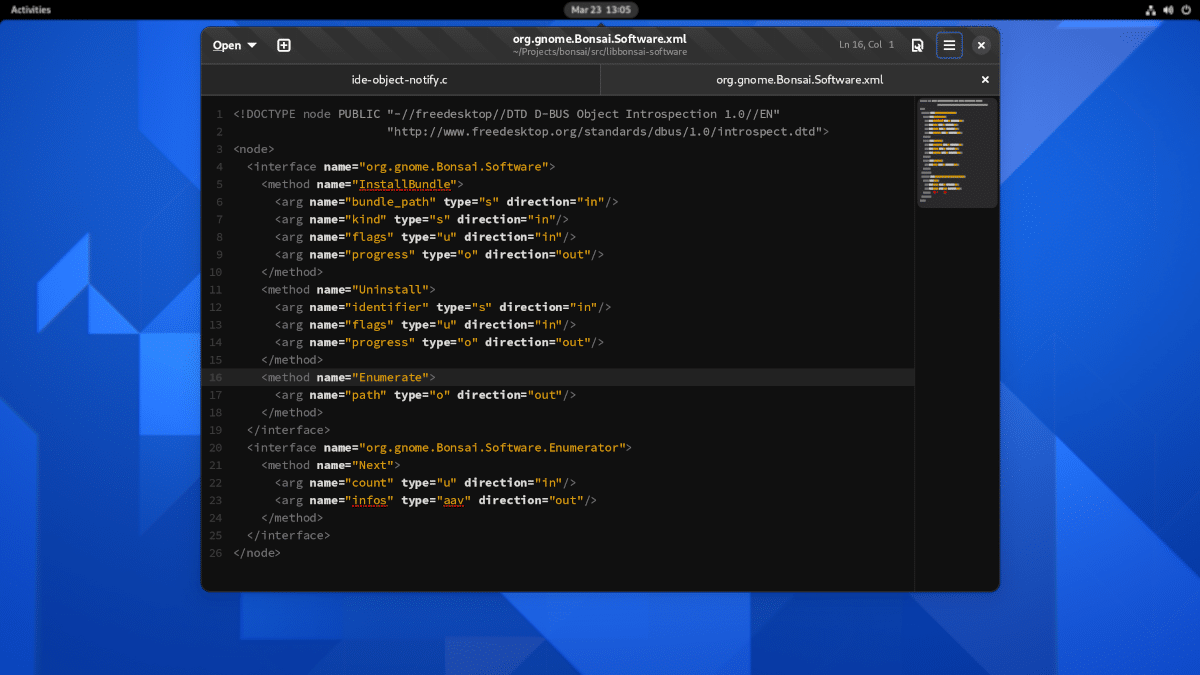
In Linux we have many desktops, and that is good and bad. Good because we have a choice, bad because an application can be out of tune if it is not designed for our graphical environment. That is not a problem we see on Gedit for GNOME, but the project behind this popular desktop is developing its own text editor, with its philosophy, but full of functions so that we do not miss anything.
So what posted Christian Hergert (via It's FOSS) on his blog, where we have everything explained with all kinds of captures. To begin with, Hergert says that the preferences dialog is back, and it has done so with an improved design. Some time ago they eliminated it, thinking that it would improve the user experience, but they have backtracked, not without first retouching their image a bit.
Text Editor, the GNOME text editor prepares for GNOME 42
The Open menu type "popover" has also received aesthetic adjustments, and a GSetting has been added for those who want visual spaces in the option of drawing. If something more similar to Vim is preferred, this «Text Editor» can test your emulator using GtkSourceVimIMContext, something that can be executed with the command (if the flatpak version is used) flatpak run –command = gsettings org.gnome.TextEditor.Devel \ set org.gnome.TextEditor keybindings vim # or "default". Like much other GNOME software, it is written in libadwaita, and can be customized with many colors.
And the million dollar question is: will it replace Gedit as the default text editor in the next desktop version? It is difficult to know. There are a couple of things to keep in mind: the first is that the fact that GNOME changes a default application does not mean that it will change in all distributions that use GNOME. That is, for example Ubuntu may decide to stay in Gedit even if GNOME makes the change. The other is that, as explained in It's FOSS, the development of Gedit seems not to go as fast as it should, so what Hergert writes saying that «Text editor has really been taking shape in the last two weeks as we rush to get things ready for GNOME 42»May refer to that.
Whatever they decide, whoever prefers Gedit can always install it on their own from the official repositories of practically any distro.
The most important thing about this editor is that it finally arrives with gtksourceview 5. Anyone who has used gedit and tried to load a js or css with very long lines will have had serious stability problems. This new editor is sorely needed.